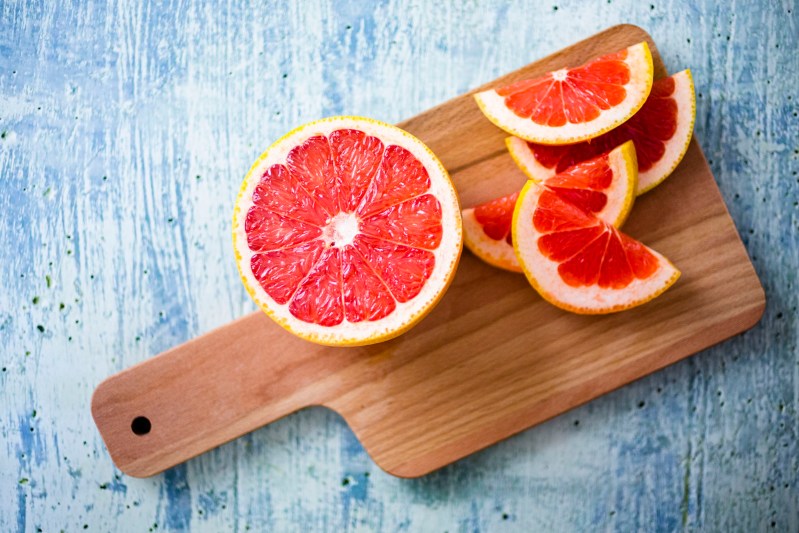Drinks culture is built around communal traditions that celebrate both ingredients and people. The stories are fascinating, whether the theme is the history of Pilsner or Georgian amphora wine. The cantarito is no exception, a drink with Mexican roots that goes way, way back.
Melinda Archuleta is the chef and founder at Bar Carlo in Portland, Oregon. She didn’t realize that cantarito was a known cocktail before a trip to L.A. to visit her sister. There, at El Compadre, she experienced it firsthand. “I’m a tequila-soda-grapefruit drinker, so their cantarito was my obvious choice, and it brought back a lot of memories around other simple cocktails I’d had over the years in Mexico and San Diego, many of them built around whatever was at hand or at the corner store, and always lengthened with soda to encourage lingering a bit longer,” she said.
The drink conjured up memories of margaritas lengthened with beer while staying with her uncle in El Golfo de Santa Clara along the Sea of Cortez. “The cantarito is a beloved Mexican cocktail with roots in Jalisco, the heartland of tequila production, although the true origin of the cocktail is up for debate,” Archuleta explained. “To many, it will read as a quick-and-dirty margarita or Paloma variant; however, its simplicity is deceptive, as this mix of tequila, fresh citrus juices (orange, grapefruit, and lime — in that order), a splash of squirt, and sometimes a pinch of salt or chili is much juicer and refreshing than either of its relatives.”
In the spirit of great drinks and a toast to Hispanic Heritage Month, we took a deeper dive into this storied beverage.
The cup

Archuleta said the “little jugs” cantaritos tend to be served in are essentially unfinished clay cups. Back when, they would lend an earthiness to the drink (and sometimes lead-based paint, hence the change up). Today, she said you’re more likely to sip one out of a properly glazed and sealed cantaro.
“I know this because trying to find an unglazed water jug was near impossible for me in Tijuana and at the border, where almost anything goes,” she said. “In my attempt to recreate a childhood-sense memory, I had to buy a used jug so that I could enjoy that earthy, cool, and invigorating sensation. We kept one on our fireplace growing up, and somehow the jug softened that hard and unpalatable SoCal tap water.”
The earthenware boasts other benefits, too, beyond looking super appealing. “Because the clay acts as an insulator, your drink stays cooler longer, which is essential in sunny Jalisco,” Archuleta said. “The rustic nature of the cup itself symbolizes a connection to the surroundings while the tactile experience of holding the porous mug is grounding, as it reflects la Tierra.”
Making one at home

Fall might be the very best time for cantaritos. As Archuleta pointed out, citrus peaks in fall and winter. “Grapefruits, which are often overlooked and frequently not stocked in our homes, are the backbone of this drink, so even grabbing one of these at the store will yield you four-to-six drinks,” she told us.
An agave spirit is needed, most often in the form of mezcal or tequila. Archuleta’s unaware of other spirits being used in the famed drink, but she admits that one made with Raicilla could be really interesting, bringing “a fruitier component to balance the spirit’s natural smokiness,” she said.
Beyond that, it’s about freshness and simplicity. “We did a spicy pepino cantarito for Hispanic Heritage Month this year, which was extra refreshing,” she said. Archuleta added that the drink was radiant with citrus and fully embodied the cocktail’s pedigree. “I even made a chamoy, based on sangrita (a spicy-sweet-savory tequila chaser) that added more depth and honored the street stall method of selling these with lots of accompaniments,” Archuleta explained.
Who’s thirsty? Read on for a recipe you can whip up at home.
Cantarito recipe

First off, if you don’t have a clay mug, I won’t tell on you, but you might have a ceramic one that can mimic the insulating quality of the clay,” Archuleta said. And bonus points for Squirt in a glass bottle, as the chef suggested. As for tequila, she says anything you like, so long as it doesn’t break the bank.
Ingredients:
- 2 ounces tequila
- 1 ounce freshly squeezed grapefruit juice
- 1 ounce freshly squeezed orange juice
- 1/2 ounce freshly squeezed lime juice
- Pinch of salt
- Squirt to top with
Method:
- Build the drink in an ice-filled mug with all ingredients except the soda.
- Top with Squirt.



